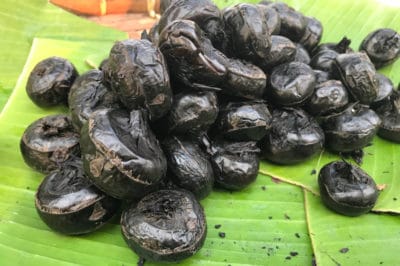Water Chestnut Climate Requirements
Chinese water chestnuts will perform well for you if:
- You’re in USDA plant hardiness zones 8 through 11 with a frost-free growing season of at least seven months, OR
- You’re in USDA plant hardiness zones 4 through 7 and can start the plants indoors from three months to one month before your last spring frost date.
Where to Plant Water Chestnuts
Any waterproof containers — including kiddie pools and old bathtubs — are suitable for growing water chestnuts. But the least expensive and easiest to manage are small containers such as 3-gallon (11.3 liter), food-grade plastic buckets. They accommodate single corms with ease.
Expert gardener’s tip: Water chestnuts send out underground runners with corms all along their length. One plant may yield 13 ounces (0.9kg) of corms for every 1 square foot of soil its runners cover.
Starting Your Corms Indoors
Step 1: Fill your containers to within 3 inches of their rims with a 50/50 mix of organic compost and peat moss.
Step 2: Set a corm 4 inches deep in each container and cover it with medium.
Step 3: Thoroughly soak the medium and let the containers drain.
Step 4: Place the containers in a sunny spot such as a south-facing window.
Step 5: Keep the growing medium damp while the leaves grow. Overwatered corms rot.
Moving Outdoors
When their leaves are 8 inches tall and danger of frost has passed, move the plants to a sunny outdoor spot. Flood the containers so the medium is 2 inches underwater. Maintain that water level until harvest.
Expert gardener’s tip: Where summer is very hot, give the plants afternoon shade. Use shade cloths available from your garden supply store if your containers are too heavy to move.
When to Harvest
Harvest your water chestnuts when their leaves die back. Drain the water, then lift and rinse the root mass. Gently separate the corms. After washing them, refrigerate what you can eat within the next week or 10 days in brown paper bags. Freeze the rest unpeeled in airtight containers for up to six months.
Expert gardener’s tip:You can also store some of the corms in damp sand over the winter and plant them in spring. Just don’t let them dry out.
